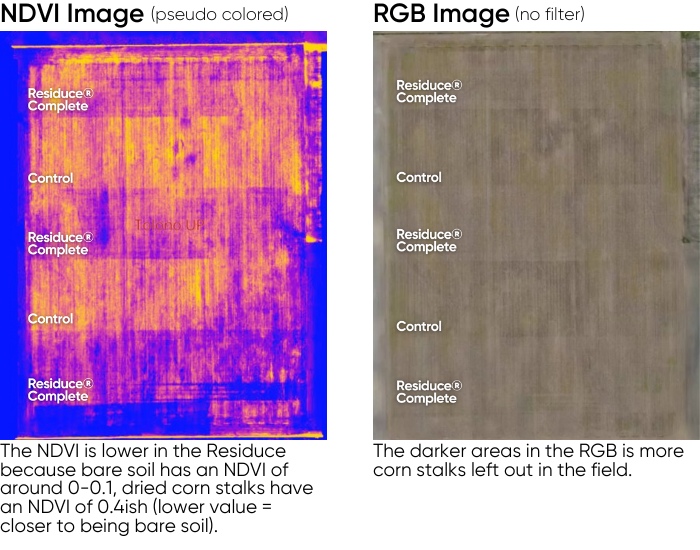TerraTrove™
Residuce® Complete
Fill Your Soil’s Bank with Nutrients
To facilitate crop residue breakdown and make fertilizer uptake more efficient, growers turn to TerraTrove™ Residuce® Complete, a diverse blend of naturally-occurring, nutrient-cycling bacterial microorganisms. This all-in-one solution includes folic acids and a food source, recycling and repurposing unprofitable carbon.
TerraTrove Residuce Complete breaks down unavailable carbon such as corn stalks, converting them into plant-available nutrients. This process nourishes the soil, optimizing tillage and improving root vigor. Residue breakdown increases field plantability, resulting in less skips and improving standability.
Residuce Complete — part of DPH Biological’s TerraTrove portfolio — contains an array of microbes and folic acids that enhances the soils life cycle by securing available nutrients for future crops. While Residuce has performed well in fall, evidence suggests that its use in spring could provide additional benefits.
Plant pathologist Alex Cochran, Ph.D., explains the data and science behind using biofertilizers in this webinar – “A Roadmap to Success: How to Customize Biofertility Practices to Maximize Farm Profit.”
Discover More: Explore our TerraTrove portfolio here.
Seeing is Believing
Residuce® Complete Trial
113 acre field in Tolono, IL.
Previous corn crop, no tillage or manual collection of stalks.
Residuce® was applied at a rate of 12.8 fl oz./acre. Applied by United Prairie on November 23, 2022 in water at 15 GPA using a 120′ sprayer.
Plats are 480′ wide by roughly 1200′ long.

Michigan State NKP Stover Calculator
Studies show that residue contains 100 lbs. of N, 50 lbs. of P205, & 210 lbs. of K20 an acre on a 200-bushel corn crop. Residuce® helps sink these nutrients into the soil making them available for uptake. Farmers can expect a 3:1 ROI with Residuce®.
What’s this mean?
Given the 19.7% accelerated degradation of stover, here is what Residuce is delivering in this particular study:
- 19.7 units of N released
- 9.85 units of P released (3x more available than non-organic P)
- 41.37 units of K released
